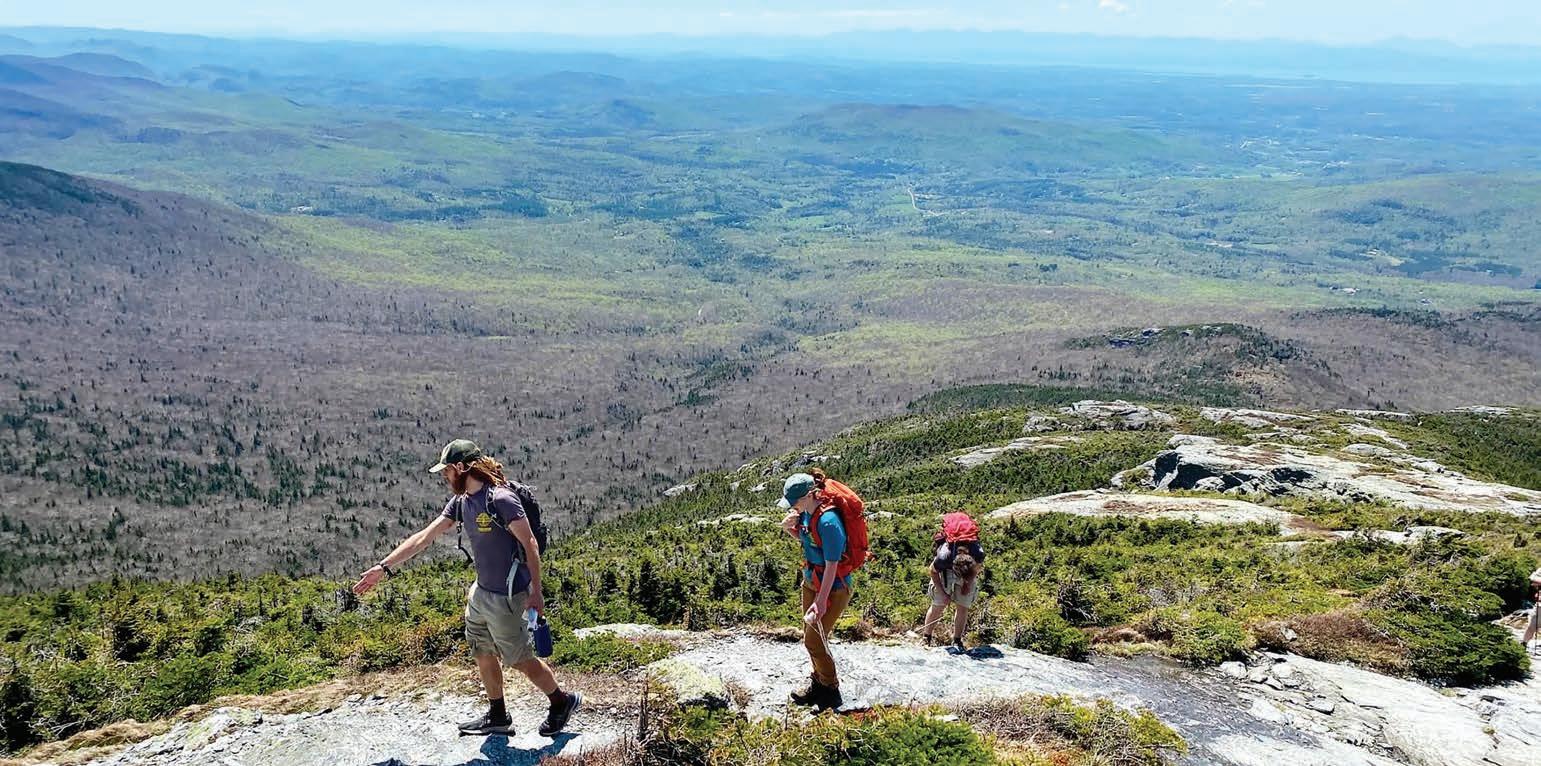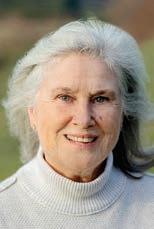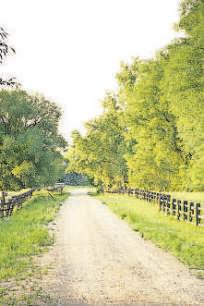Boat-raiser Yacht regatta benefits Maritime Museum Page 11



An idea to revamp the historic Parade Ground has stirred up the Shelburne community since June, and although the dust had seemingly begun to settle, things began to swirl again last weekend after selectboard chair Mike Ashooh wrote a joke online that has dozens of residents up in arms again.


In a post titled, “Shelburne Dunking Booth at Shelburne Days,” he wrote, “Yes, that’s right! You can pay $10 to pitch a baseball and dunk your favorite selectboard member at this Saturday’s Shelburne Days at the Farmers Market! All proceeds go to help fund the Parade Ground upgrades! Because of Open Meeting Laws, you can only dunk one selectboard member at a time.”

His post, meant as nothing more than a tongue-in-cheek bit to bring a little humor to the situation, has pushed some residents to such fury that they are questioning how to remove him from the selectboard.
“Is there a way to remove someone from the selectboard?” asked Susan Declue, prompting follow-ups that outline what the town charter says about removing elected officers.
“As for a joke, the Parade Ground upgrade is not funny,” Bob Birkett wrote. “It was conceived entirely within our town government, nurtured in relative obscurity, and then when it comes to public knowledge, all negative comments are brushed aside. Still the selectboard plows ahead with this misbegotten errand.”
Contrary to those public
opinions, however, plans have not moved forward except for an initial review by the selectboard and open discussion where dozens of residents aired opposition to any plan to change the Parade Ground.
The town’s historic preservation and design review committee must review the project before it could, hypothetically, move to the development review board.
The original, unofficial plan would erect a 28-foot by 14-foot pavilion that would sit toward Falls Road. Other changes include the addition of benches, Adirondack chairs, and a 3-foothigh fence consisting of granite posts and a black metal chain.
At a historic preservation and design review committee meeting earlier this month, members voted against the idea of putting any sort of gazebo on the historic parade grounds, and although the committee is not a quasi-judicial board, projects located within the Historic Preservation and Design Review Overlay district are required to go through this review before moving to the development review board for approval.
“The development review board would look at an application to determine compliance with the zoning regulations,” Aaron DeNamur, the town’s planning director, said. “The historic preservation and design review committee’s opinion on something like this in no way requires the development review board to agree or enforce the (committee’s) recommendation.”
But Dorothea Penar, a member of the committee, said that she

From May to October, thousands of hikers tromp rocky trails lined by tiny cotton thread on the
exposed summit of Mansfield, the highest point in Vermont. The mountain is home to a variety of complex ecological landscapes, each determined by elevation and climate.
When taking up an expedition toward the summit, hikers enter a lush green forest dominated by beech and maple trees. They scramble up rocky trails decorated by ferns and mosses and tunneled
by foliage.
Then the forest gradually transitions into an array of hardy conifers, the needles of which change the composition of the soil and overhaul the scenery entirely.
Near the summit, stunted balsam fir, black spruce, red spruce and heart-leafed paper birch emerge. These trees are dwarf in height, whipped by wind and built to endure below-freezing temperatures.
At the top of the mountain, only shrubbish vegetation can persevere.
This area is an alpine meadow, and it is what biologists call a “rare natural community.” These communities are defined not by the rarity of the species themselves, but by the unique collections of life and geological conditions that, together in their assemblage, are rare, according to Grace Glynn, a Vermont Fish and Wildlife Department botanist.
The vegetation in this alpine meadow has been forming for more than 3,000 years and, in areas, has peat 4-feet deep, she said. Mansfield supports the largest expanse of alpine meadow in the state.
Mansfield is located on the northern half of the spine of the Green Mountains and peaks at 4,393 feet above sea level, according to the Department of Forests, Parks and Recreation.
Unlike surrounding mountain ranges such as the White Mountains and the Adirondack High Peaks — which have several densely located high-elevation

Education & Enrichment for Everyone, a lifelong learning organization established in 1990, has announced its fall schedule of lectures.
Lectures are held on Fridays from 2-3 p.m. at Faith United Methodist Church, 899 Dorset St., South Burlington and on Zoom.

To enroll in the series, mail a check for

$55 per person payable to EEE, c/o Cathy Chamberlain, 2504 Brand Farm Road, South Burlington VT 05403. Include your mailing address, phone number and email. Memberships will also be accepted at the lectures.
Walk-ins for individual live lectures are also welcome. The fee is $8, check or cash, and payable at the door from non-mem-
Marilyn Webb Neagley, one of the formative leaders of Shelburne Farms, has written a memoir, “Attic of Dreams: A Memoir.”
Her memoir traces a life of healing from family dysfunction and jumping headlong into a life of natural curiosity, art and activism. She explores the themes of home and community, addiction and secrecy, recovery and restoration, arts and the natural world, growth and wholeness, and how the changing times and culture are perceived through older eyes.
“Marilyn Neagley’s memoir addresses issues so critical now: how to take care of our natural world, of each other, of ourselves — we need magic attics of imagination and stories that inspire our activism,” Julia Alvarez, Dominican-American poet, novelist, essayist and author of “Afterlife,” said. “In addition, her book touches on a beloved place in Vermonters’ hearts, and by extension all the beloved places on our planet home we have neglected for far too long.”
The book will be released by Rootstock Publishing Sept. 5. A public book launch with the author will be held Thursday, Sept. 7, at 6:30 p.m. at the Pierson Library in Shelburne.
Neagley served as president of Shel-
burne Farms in 1976 and was active in the foundation through the 1980s. She is the author of two previous books and co-editor of another. Her 2007 book, “Walking through the Seasons,” received a gold medal from the Independent Publisher Book Awards for best northeastern nonfiction.

She has been a Vermont Public Radio commentator and has written essays for her local newspaper. Neagley, raised in Ascutney, currently lives with her husband in Shelburne.

PROVIDING DENTAL CARE FOR FAMILIES FOR OVER 35 YEARS



Dr. Guter was raised in Colchester. She graduated from Colchester High School and completed her undergraduate education at Middlebury College. Dr. Guter received her Doctor of Dental Medicine degree from the University of New England College of Dental Medicine followed by one year in Boulder, CO, completing an Advanced Education in General Dentistry residency program. Dr. Guter loves hiking, camping, and walking in the woods with her two dogs. She also enjoys boating on Mallets Bay in summer. She is excited to be returning to Vermont to practice dentistry and to serve the community she grew up in!
bers.


For more information, visit eeevermont.org, email info@eeevermont.org or call 802-343-5177.
Friday, Sept. 8
“Public Health in Vermont” with Mark Levine, MD, Vermont commissioner of health
Friday, Sept. 15
“What’s So Great About Beethoven’s Fifth?” with Larry Hamberlin, recently retired professor of music, Middlebury College
Friday, Sept. 22
“A Deep Dive into the History of the Burlington Ravine” with architectural historian Britta Tonn
Friday, Sept. 29
“Labor in the Food System” with Teresa Mares, associate professor of anthropology, and director for the graduate program in food systems, University of Vermont
Friday, Oct. 6
“Let Me Ask You This” with Jane Lindholm, host and producer of “But Why” and special projects, Vermont Public
Friday, Oct. 13
“State of the Economy: Vermont and Beyond” with Mike Pieciak, Vermont state treasurer
Friday, Oct. 20
“Electrifying Flight and Building the Work Force of the Future” with Tyler Seeholzer, team member, BETA Technologies
Friday, Oct. 27
“Rebel Memory: Indigenous Movements and Oral History in Bolivia” with journalist and UVM professor Benjamin Dangl
Friday, Nov. 3
“The 1960’s Fluxus Art Movement: Blurring Art and Live” with John Killacky, former Vermont representative and rxecutive director, Flynn Center
Friday, Nov. 10
“Enabling Renewable Energy Integration with Grid Flexibility” with Mads R. Almassalkhi, professor of electrical engineering, UVM
Friday, Nov. 17
“City Place: Burlington’s Long-awaited Project is On the Move!” with David C. Farrington Jr., president, Farrington Construction, and general manager of Cityplace Partners
Total reported incidents: 52
Traffic stops: 8
Warnings: 7
Tickets: 1
Medical emergencies: 19
Mental health incidents: 7
Suspicious incidents: 3
Domestic incidents: 1
Agency assists: 3
Citizen assists: 7
Welfare check: 1
Automobile incidents: 1
Car crash: 3
Animal problem: 4
Theft: 1
Alarms: 4
Aug. 14 at 6:49 a.m., a caller
reported a single vehicle crash at the Village Mobil.
Aug. 15 at 10:33 a.m., a two-vehicle crash with no injuries was reported on Harbor and Shelburne roads.
Aug. 15 at 4:54 p.m., a caller told police a person was camping near the railroad station. Police found the individual, who agreed to leave the property.
Aug. 16 at 7:12 p.m., a woman reported a domestic dispute that occurred between her and her boyfriend. Family court was contacted, and she obtained an abuse prevention
order.
Aug. 18 at 4:37 a.m., a single vehicle collision was reported on Spear Street. Police say they operator crashed into a power pole and fled the scene. It was later determined the vehicle was stolen in Milton. The vehicle was impounded, and the Milton Police Department was notified.
Aug. 19 at 9:33 p.m., police spoke with some partygoers at a Winter Haven Road residence about keeping the noise down.
Aug. 20 at 12:31 p.m., a caller reported their vehicle stolen from Penny Lane.
Mosquitoes collected in Alburgh and Vergennes in late July have tested positive for West Nile virus at the Vermont Department of Health Laboratory.
So far this season, 824 mosquito pools — groups of up to 50 mosquitoes of the same species collected from the same site — have been tested. These are the first detections of West Nile virus in Vermont this year, and there have been no reported human or animal cases of the virus disease this year.
The last confirmed human case was in 2021.
West Nile is spread through the bite of an infected mosquito. Historically, the virus has been found in all counties of Vermont from June through October, but the risk is highest in late summer and early autumn. Most people who are infected do not have any symptoms. Some people will have fever, headache, body aches, joint pains, vomiting, diarrhea or a rash.
While far less common, few people infected will develop serious illnesses, such as encephalitis. People age 60 and older and those with certain medical conditions are at greater risk for serious illness.
Since 2002, there have been 17 human cases of West Nile virus in Vermont. There have been no human cases of the more deadly eastern equine encephalitis since 2012.
“We expect to find West Nile virus in mosquito pools during
the summer months,” state public health veterinarian Natalie Kwit said. “Fortunately, most people infected will never have symptoms, and cases of West Nile virus have been rare in Vermont. The best protection is to take simple measures to protect yourself and family from mosquito bites.”
The health department offers these tips to prevent mosquito bites:
• Wear long-sleeved shirts and pants when outdoors.
• Limit your time outside at dawn and dusk when mosquitoes are more likely to bite.
• Use insect repellent labelled as effective against mosquitoes. The EPA has a tool to help find the right repellent for you. These can also protect you from tick bites.
• Get rid of standing water in places like gutters, tires, play pools, flowerpots and bird baths.
• Mosquitoes breed in water that has been standing more than four days.
• Cover strollers and outdoor playpens with mosquito netting.
• Fix holes in screens and make sure they are tightly attached to doors and windows.
Horse owners should consult with their veterinarians and make sure their animals are up to date on vaccinations for this and other diseases spread by infected insects or ticks.
More at healthvermont.gov/ mosquito.
Serving the community of Shelburne A publication of Vermont Community Newspaper Group LLC shelburnenews.com
Advertising Wendy Ewing wendy@shelburnenews.com (802) 985-3091 x12
Advertising Director Judy Kearns judy@otherpapersbvt.com (802) 864-6670 x21
News Editor Tommy Gardner
Staff Writers Aaron Calvin Corey McDonald Liberty Darr
Production Manager Stephanie Manning stephanie@shelburnenews.com
Editor/Publisher Gregory Popa gpopa@stowereporter.com
Billing inquiries Leslie Lafountain leslie@stowereporter.com (802) 253-2101
Advertising submission deadline: Friday at 5 p.m. advertising@shelburnenews.com classifieds@shelburnenews.com
Editorial submission deadline: Friday at 5 p.m. news@shelburnenews.com
Calendar submission deadline: Friday at 12 p.m. news@shelburnenews.com
Contact: 1340 Williston Road South Burlington, VT 05403 (802) 985-3091

The images of people in Maui fleeing toward the safety of the ocean as an apocalyptic, hurricane-driven firestorm bears down, unfolds like a horror movie as it becomes clear that losing a step or two might be the difference between life and agonizing death.
By all accounts this wildfire exploded like a bomb, speeding through Lahaina without warning — another vengeful environmental revolt, the latest in a series of climate hellscapes heralding the arrival of this week’s new normal.
As the death toll exceeded 100 last Wednesday, and over 1,000 unaccounted for, officials expected the number to rise significantly as the grim task of sifting through tons of debris, much of it reduced to ash, searching for remains dragged slowly on. The recovery is tediously prolonged, becoming painfully apparent the same blast furnace heat that melted steel reduced bodies to brittle shells, so fragile they easily crumble, or even wisps of powder scattered ritualistically over the places they loved by Pacific breezes, as they might have been by distraught loved ones.
But even one of the worst tragedies of its type is not big enough to transcend American politics with theatrically aghast Republicans — who routinely write off thousands of gun deaths to “freedom” — quick to blame President Joe Biden for a mountain bike ride and time at a Delaware beach even as praise poured in for the White House’s rapid deployment of resources to the stricken island.
Hawaiian Gov. Josh Green thanked Biden for sending emergency relief so quickly. “We’re honored to have the president jump to it so fast. In six hours, he approved the presidential declaration (of disaster). It was incredible. Within six hours! And so that opened up FEMA and amazing support for recovery.”
Echoing Green, U.S. Sen. Brian Schatz said in a statement: “Recovering from these devastat-
ing fires will take significant time and resources and we need all the federal support we can get.”
While the GOP’s sudden concern for human suffering might easily be dismissed as an exercise in the sleight of hand necessary to deflect attention from their likely presidential nominee’s deepening legal quagmire, far right politics does play a major role in the dangerous situation facing not only Hawaii but the rest of the nation and world as well.
Conservatives have propped up the fossil fuel industry for decades, profiting handsomely while suppressing any indication that petroleum products play a role in global warming, which Exxon Mobil knew more than 40 years ago would “lead to dramatic environmental effects by 2050.”
Capitalism left to its own devices rewards massive greed massively and the oil industry reflects perfectly how making money transcends all else, including human lives.
As reported in The New Yorker, while gas prices soared last spring to well over $4 per gallon and people struggled to pay bills, Big Oil’s profits were through the roof, with major producers Exxon Mobil, Chevron and ConocoPhillips all earning, after taxes, profits of over $5 billion — and that’s only the first three months of the year. They don’t have anything against you personally, it’s just business. But as we are learning perhaps too late, the financial dividends of oil extraction are dwarfed by its extensive devastation of the natural world.

The tar sands of northern Alberta are challenging to describe in size and scope; words feel insufficient and seem like an exaggeration. Imagine a gougedout hole in a pristine boreal wilderness covering over 54,000 square miles, roughly the size of Florida, visible from space. The oil extraction project going on there for decades is a filthy degradation of the Earth where sludgy deposits of bitumen, mixed with sand, clay and water are eventual-
ly converted to usable, synthetic oil through a hugely expensive and environmentally disastrous process, leaving enormous loads of toxic waste as well as water and air pollution.
A riveting new book that reads like fiction but isn’t, John Vaillant takes us to the center of the tar sands, Fort McMurray, 600 miles north of the border, “an island of industry in an ocean of trees,” connecting, according to a Guardian review, “all those trees and that industry in an increasingly deadly symbiosis.”
In “Fire Weather: A True Story from a Hotter World,” the author outlines how one of McMurray’s byproducts is the very climate change that came home
To the Editor: In response to the letter “Newspapers must keep police accountable,” I have an alternate viewpoint. I would like our police officers to know that the majority of Americans value and respect their service to keeping
to roost in 2016 when a gigantic, fast-moving wildfire took the area by complete surprise, like the fate suffered in Maui last week.
The same familiar circumstances were at play in the forests around Fort McMurray as in Hawaii: rising temperatures, dropping humidity and strong winds leading to fires of unusual intensity that caught officials unaware leading to the mass evacuation of nearly 100,000 people in Alberta and the desperate flight toward the sea in Lahaina. Created by climate change, according to Vaillant, these conditions have led to an atmosphere “more conducive to combustion than any time in the past 3 million years.”
people safe and responding to constant predicaments. No other institution gets denigrated for a small minority of bad employees as much as police officers do. Most people know what a difficult job you have, but thankfully you are still willing to put yourselves in harm’s way every day for other people.
The price the world pays for oil extends far beyond the gas pump. Previously safe places are no longer safe. Fire and water inexorably march through communities like a merciless, invading force bent on obliterating any illusions of safety we continue to harbor.
We’re no longer shocked by reports of blistering temperatures lasting for weeks on end, tropical downpours more likely in a monsoon, and the threat of rising tides, 100-degree ocean water and a planet at the tipping point.
The earth is screaming. Hopefully, someone is listening.
Walt Amses is a Vermontbased writer.
We know most officers are not “scary or abusive.” You just want to do a great job for your communities, and then head home to be with your families. Always remember that most people appreciate knowing that you are our peacekeepers.
Marie Proft ShelburneWalt Amses
Fire and water inexorably march through communities like a merciless, invading force bent on obliterating any illusions of safety we continue to harbor.

It’s tempting to claim that bear populations are exploding in Vermont, but the uptick in bear sightings is largely due to the animals having learned, over time, that food is easily accessible in people’s trash cans, bird feeders and compost.
Bears are changing their home range, and mother bears have taught their young where to find easy pickings in neighborhoods. This knowledge is passed down from generation to generation. Bears have very low reproductive rates and undergo a unique reproductive process called delayed implantation. They don’t become sexually mature until between 3 and 4 years old and females give birth every other year. Cubs stay with their mother for about 16-17 months.
Despite recent research that reveals that hunting and killing bears does not reduce future human and bear conflicts, Vermont has one of the longest bear hunting seasons in the country, including the use of hounds. The official bear hunting season starts on Sept. 1 and runs through the day before the November regular deer season.
In addition to the official hunting season, many people are surprised to learn that bears are terrorized by packs of hunting hounds for most of the year, beginning on June 1 — the start of bear hound training season, which runs right through the start of hunting season. Bear cubs are very small this time of year and are especially vulnerable, especially when they’re separated
from their mothers by the hounds. The only difference between the bear hunting and training season is that bears may not be shot and killed during the training season.
Approximately 20 percent of Vermont’s bear population has been hunted and killed over the last couple of years. That does not include bears killed outside of the legal season for causing problems with landowners or bears that were mortally injured by hunters and not recovered, which is not uncommon when hunting bears.
This is from Vermont Fish and Wildlife’s website: “If you make a poor shot, a wounded bear can run for considerable distances before dying. Heavy bones, hides and fat layers may prevent quick-clotting blood from dripping and leaving a good trail, making an injured bear hard to track.”
A bear was spotted a few years ago in Waterbury with their jaw partially blown off trying to eat apples under a tree. About half of the bears killed each year are females, which means cubs are orphaned every year. Cubs themselves are also killed each hunting season as there’s no law prohibiting that.
There is also no law prohibiting a hunter from killing a mother bear with cubs. After witnessing a sow with cubs shot and killed last season, a Fayston man presented a petition to fish and wildlife that would prohibit intentionally killing a mother bear with cubs. His petition was met with a lukewarm response, and the department has yet to provide its position. We aren’t hopeful.
Hound hunters use powerful and tenacious breeds like Plott hounds who run miles away
from the hounder as they pursue bears, and other wildlife, domestic animals and people for that matter. Bears are often chased from the woods — where we want them — into residential areas and roads, placing not only the animals in danger but also motorists.
Hounders are often miles away from their hounds in their trucks tracking the hounds’ location via handheld GPS devices. These uncontrolled hounds chase bears, sometimes for miles, across private property and into roads, until the desperate animal climbs a tree to escape, at which point the hunter shoots the bear from the tree.
This violent hobby often results in hounds being injured in these dangerous pursuits as well. The hounds also violate

private property rights and cause disturbances with landowners every year in Vermont. A woman and her leashed puppy were attacked by hounds pursuing a bear on public land in Ripton a few years ago. The hounder didn’t show up to call off the hounds until about 30 minutes after the encounter.
Posting your land against hunting — per Vermont’s onerous posting requirements — offers you the best legal protection against this unwanted activity on your private property. You can post “hunting by permission only” signs if you wish to have control over who gets to hunt on your land. Some of you might’ve already seen this encounter between a well-known hounder and a landowner in Peacham (youtu.be/4LDqBfRmrtg).
The best thing we can do for bears — and humans — is not offer them food, which will encourage them to move along. We see bears every year on our security and trail cameras on our property and never once have the bears caused a problem. They never stay long. We are diligent about bringing garbage to the transfer station and don’t offer the bears any tempting food sources.
Unlike grizzlies out West, black bears generally pose no threat to humans. They’re just trying to survive in a human-dominated landscape with houses being erected in travel corridors that they’ve traversed for years.

Loss is such an inherent part of life, it’s a wonder we’re not better able to absorb it. Instead, it can stop us mid-air with no parachute to be found; gravity tumbling us to hard ground where we’re forced to reckon with the empty chair, the random voicemail and the infinite remnants of an entire life.
It’s no wonder grieving how-tos are a booming business. Books upon books about coping, dealing and healing. It makes total sense why we need these resources since we live in a culture that tends to package death as an event that happens and ends.
For many, and maybe most of us, that is far from true. We struggle to grieve among the living. For some, the grief is unnavigable. It’s as incomprehensible that one still has to brush their teeth let alone show up for work.
And it’s awkward. Oh, so awkward when people act like death is over. The funeral could be a month or a year ago, either way, no one is going to talk about it or mention the person who died. Well intentioned, it’s as if we’re afraid to remind the bereaved of their loss. Even though, inside, we know they’re breathing their loss every day.
Perhaps this not talking thing only adds to the insufferableness of grief. That once the initial condolences and memorials have passed, the bereaved often must
soldier on alone.
What if talking about those who have died is the path to help soften and ease suffering? Maybe grief itself isn’t a thing to fix, heal or expect to ever end, and is not meant to be borne in isolation. Seems to me that grief could have a seat at the table. Invited in and welcomed. After all, when we don’t talk about those who have died with the people who loved them, it’s as if their loved one never existed.
Of course, no one can say what happens to us when we die, but I’ve always felt that something of the person who died remains in our day-to-day realm. This belief took root in my seventh-grade science class when I was taught that matter is neither created nor destroyed. It cycles through the universe.
“The cosmos is within us,” Carl Sagan said. “We are made of star-stuff.”
So how could a person who died be gone?
It’s not difficult for me to get my head and heart around this concept. For when I think of a beloved who has died, it is not their anatomy or mortal being that thrum in their absence. It’s their ineffable spirit. Their energy, the magnificent difference they made in the world, and, for lack of a better word, their soul. All the things that made me love them when they were here, I still love. More importantly, I still feel.
It’s not just the so-called good things about our loved ones that
remain, it’s the annoying stuff too. For years I’ve told my husband that when I’m gone what he will miss the most about me are the quirks that make me — me. From overthinking every situation to crying while watching the news. From bypassing the open carton of milk for the new one to putting toothpaste directly in my mouth rather than on the brush. (I know, how could I?)
Yet, those will be the things he’ll miss.
I think we’ve all noticed this in one way or another. How former complaints about a departed loved one somehow transmute into behaviors that we now appreciate, forgive and even laud. It’s another way we experience the existence of our person. Their essence cannot be destroyed. It lives. Differently. But here, right here. Whenever we pay attention.
So, talk about people who have died with their loved ones, with respect and full understanding if that’s not wanted. But I believe, overall, it is wanted. That grieving in communion is a catalyst for intimacy and empathy.
For some, it will be a way to hear, “You’re not alone. I hold this with you.” For others, it’ll be stories and memories of their loved ones that can bring some light to the dark.
Kahil Gibran wrote, “When you are sorrowful, look again in your heart and you shall see that in truth you are weeping for that which has been your delight.”
continued from page 1
doesn’t recall a time when the development review board ever recommended something different or rejected the committee’s recommendation.
“We usually look at a permit so in detail that everything’s ironed out before it comes to them,” said Penar.






She did note that for this recommendation, the committee did not directly look at the pavilion sketch that has been put forward simply because they saw this review more as a two-part recommendation.
“It was a preservation issue and the aspect of just its presence, not its particular design,” Penar said. “If they decide or the development review board recommends a different thing and the selectboard wants to go ahead with the project, we will have to review the pavilion as presented.”
The basis of the vote to not recommend any structures on the grounds — which passed 5-1 with one abstention — came solely on




the basis to preserve the grounds at all costs. Penar said that this topic is not new to the committee, as more than 30 years ago there were suggestions to place a bandshell on the property.








“We talked a lot about the history and the background of that property and its connection to the military history of the village,” Penar said. “That space is also on the National Register along with the whole village area. We are, of course, not going to have a militia marching there, but we try to at least maintain the important aspects and the openness was important.”
Selectboard members will



now have to decide on whether to bring it for review to the development review board or nix the project altogether.
As for the joke that sent the town into a spiral, two selectboard members, Andrew Everett and Matt Wormser, agreed that Ashooh may not have a career as a stand-up comedian, but the aggressive response from residents is astounding.



“How sincere attempts on the part of the town to explore ways to make the Parade Ground more useful and welcoming have spun — in the eyes of some — into an all-out assault by the Board on the foundations of our town will always elude me,” Wormser said.

“We are, of course, not going to have a militia marching there, but we try to at least maintain the important aspects and the openness was important.”
— Dorothea Penar
Dancing with the Burlington Stars returns to the Flynn stage on Sunday, Sept. 17.

A community celebration of local talent, team spirit and generous people supporting a good cause, Dancing with the Burlington Stars is the annual fundraising event for the Vermont Association for the Blind & Visually Impaired.
All proceeds support the association’s statewide services for Vermonters with impaired vision to help them be more independent, cultivate adaptive skills and improve their quality of life.

Showtime is 6:30-8:30 p.m., and doors open at 6. Tickets are available at the Flynn box office.
Teams this year include Darren Springer and Caitlin Morgan, Heather Leibenguth and Rose Bedard, Doug DiSabito and Liza Matton Mercy, Sarah DeGray and Steve Wish Shannon, Cat Viglienzoni (South Burlington) and Eric Recchia, and Ali Dieng and Megan Stearns (Hinesburg).
Three guest teams will also perform: South Burlington High School Dance Team, BFA High School Dance Team and the Up North Dance Studio Team. Dancers come from South Burlington, Hinesburg, Burlington, Williston, Grand Isle, Milton and Essex.
Give the lifesaving gift of blood at the Shelburne community blood drive sponsored by St. Catherine of Siena Parish is holding a blood drive Tuesday, Sept. 19, noon-5 p.m., 72 Church St., Shelburne.
To sign up, call 800-733-2767 or visit redcrossblood.org and enter Shelburne to schedule an appointment. Appointments are strongly recommended as walk-ins cannot always be accommodated.
If you are an eligible type O, B - or Adonor, consider making a power red donation. Red blood cells are the most transfused blood component.
Contact Laureen with any questions at lmathon104@gmail.com.

Burlington photographer Carolyn Bates will launch her newest book, “Street Murals of Burlington, Saturday, Sept. 9, at 4 p.m., at the First Congregational Church, 38 S. Winooski Avenue in Burlington.
The book is a photographic romp through the streets of Burlington, capturing images of the many examples of public artistry in the form of paintings and murals on buildings, fences and walls all over the city.

The event will include an exhibit of photographs that are included in the book. Bates will give a talk on the creation of the book and discuss the various artists included.
The public is welcome, and refreshments will be served.

Join community members, Vermonters with dementia, caregivers and Alzheimer’s Association staff to explore how to expand
support for members of the community living with Alzheimer’s and dementia, Sunday, Aug. 27, 11 a.m.-noon, at Faith United Methodist Church, 899 Dorset St., South Burlington.

Information will also be provided on the latest treatments and the upcoming Walk to End Alzheimer’s. All are welcome, snacks provided.
More at alz.org/Vermont.

Vergennes Day kicks off its 41st year Friday and Saturday, Aug. 25-26.
The weekend’s activities are hosted by the Addison County Chamber of Commerce and celebrate the city and community.
The weekend kicks off Friday with the annual street dance on the city green featuring music by The Hitmen, 7-10 p.m. Activities continue Saturday begins with a pancake breakfast at the Vergennes Fire Station from 7-10:30 a.m.
The Little City Races 5K Run/Walk, 10K, 15K and Kids 1K Fun Run kickoff at 8:15 a.m. at Vergennes Union Elementary School. Register at vergennesday.com.
Other activities include free horse and wagon rides and events hosted by the Bixby Library and Vergennes Rotary. The bandstand will feature music throughout the day.

From 10 a.m.-3 p.m. the green will feature more than 60 crafters and vendor booths offering handcrafts, locally made products, food and more.
Age Well and St. Catherine’s of Siena Parish in Shelburne are teaming up to provide a meal to go for anyone age 60 and older on Tuesday, Sept. 12.
The meal will be available for pick up in the parking lot at 72 Church St. from 11 a.m. until noon and are available for anyone
Breana Killeen of Killeen Crossroads Farm is all smiles during the Aug. 6 Vermont Fresh Network’s annual fundraiser held at Shelburne Farms, alongside winning Wake Robin executive chef Bill Iliff and lead sous chef Ryan Meath. Killeen’s farmed shishito peppers were the star of the chefs’ dish, shishito pepper stuffed with smoked tamari mushrooms, garnished with pickled radishes and habanero lemongrass honey, which was named “Best Bite.”

60 or older. Suggested donation is $5.
The menu is Swedish steak with mushroom sauce, seasoned penne pasta, broccoli, wheat bread, vanilla fluff with blueberries and strawberries and milk.
To order a meal contact Kathleen at agewellstcath@gmail.com or 802-5031107. Deadline to order is Wednesday, Sept. 6. If this is a first-time order, provide your name, address, phone number and date of birth.
The Age Well meal pickup for Thursday, Aug. 24, is from 10-11 a.m., Charlotte Senior Center, 212 Ferry Road, and features
turkey vegetable burger with sauce, rice with lentils, Brussel sprouts, wheat bread, birthday pound cake and milk.
You must have pre-registered by the prior Monday at 802-425-6345 or meals@ charlotteseniorcentervt.org
The meal on Thursday, Aug. 31, features pork loin with sauce, mashed potatoes, spinach, wheat biscuit, apple cake, and milk.
The meal on Thursday, Sept. 7, features chicken marsala with mushroom sauce, diced potatoes, peas and onions, potato roll with butter, pumpkin Craisin cookie and milk.
The suggested donation is $5. Check the website for last-minute cancellations at charlotteseniorcentervt.org.

Vermont holds all-star tournaments for three different Little League divisions, and this year Champlain Valley Little League won all three, a feat that has never been done before.
The three divisions include teams comprised of 8-to-10year olds, 9-to-11-year olds and 10-to-12-year olds. The first two divisions can advance to the district, state and regional level.
The third, the Little League Division (10-12), can also advance to the World Series tournament, this year played in Williamsport, Pa.
Champlain Valley lost its World Series bid July 30 in an 8-5 loss over against St. Johnsbury. (See our story, bit.ly/3QIkbmY.)
“The success of our three all-star teams and their historic sweep of the District 1 Championship in our inaugural season is a direct reflection of the hard work put in by the players and volunteer coaches, both in the regular and postseason,” Al Giangregorio, president of Champlain Valley Little League, said. “The league will continue to foster a development-based approach to continually build the skills of all 300-plus players in the league. We truly believe this is just the start of a long run of district and eventually state and regional championships in the future.”
The Champlain Valley Little League, part of District 1, includes Burlington American, Center City (Burlington), Colchester, Middlebury, Mount Abraham, North Burlington, Richmond, Addison County, South Burlington, Vergennes Area, Williston, Winooski and Champlain Valley (Charlotte, Shelburne and Hines-
burg).
Mike Niebur, manager of Champlain 11-12 all-stars, said the team had a magical ride this summer.
“This group of 12 fantastic athletes from Charlotte, Hinesburg and Shelburne brought home the championship — the first since 2010 — and finished its tournament run as the secondbest team in the state. As a coach I’ll best remember this team as being one without ego, with 12 kids who worked hard, loved each other, and played for one another in every single practice and game.”
“It was always ‘we’ or ‘the team.’ Everything we did, we did it together, as a team, as a family,” he said. “I’ll forever love each and every single one of these kids and be appreciative of our fantastic coaches, Ken McAvey and Andy Strauss, as well as all of the phenomenal families and community who supported these kids and this team from day one.”
The Champlain Valley Little League 9-11 all-stars also won the Vermont District 1 championship and went on to force a deciding win-or-go-home game at states. Overall, the team went 8-2-1 during the season with each loss coming by only one run.



The 9-11 all-stars ultimately lost 7-6 in 8 innings to finish second at the state championship.
“They played with passion, integrity and respect for the game and their community all the while playing an amazing brand of baseball over what was just an incredible summer of baseball,” said team manager Jonathan Wolf.
Top left: The 9-11 team, front row, from left, Jacob Casarico, Henry Wolff, Cole Knudsen. Not pictured, coach Adam Knudsen. Middle row, from left, coach Eric Boyce, coach Jodie Casarico, Willem Flanagan, Felix Boyce, Griffin Daley, Emmett Trombley and manager Jonathan Wolff. Back row, from left, Levi Upton, Theo Lyons Judge, Finn Wolff, Gage Golston and Lane Edelbaum.
Above: The 11-12 team, front row, from left, Max Strauss, Carl Giangregorio, Braden Cook, Ty Niebur, Isaac Russell, Evan Dore, Holden Rodliff and Pete Stephen. Back row, from left, manager Mike Niebur, assistant coach Ken McAvey, Reid McAvey, Jaime Nassar, Izyk McGuire, Chase Rodliff and assistant coach Andy Strauss.
Below: The 8-10 team, standing, from left, Will Powers, Cooper Tanis, Grayson DiGuglielmo, Oliver Miller, Oliver Siedlecki, Franco Caligiuri, Henry Flanagan, Charlie Bronner and Rufus D’Amore. In front, from left, Camden Fox, Charlie Wolff, Grant Giangregorio. The team was coached by Al Giangregorio, Mike Flanagan and Sam Fox.
“These kids epitomized the word team,” Giangregorio said.
Eight of the of 12 players on the team were first-year all-stars, “but they quickly rallied around one another and their level of play
increased practice by practice and game by game,” he said. They came into the four-team double elimination as the fourth seed and defeated the top-seeded two teams three times over the course of four days to claim the 8-10 district championship for the first time in
several years.
“This was a total team effort and all our players contributed to this well-earned accomplishment,” Giangregorio said.
The 8-10 all-stars were coached by Mike Flanagan, Sam Fox and Giangregorio.
The 11th Diamond Island Regatta, sponsored by the Diamond Island Yacht Club and Point Bay Marina to benefit the Lake Champlain Maritime Museum, attracted 30 boats to Town Farm Bay Aug. 12 for a race in a light but consistent breeze.

The regatta, the club’s signature sailboat race, took boats on a course of about 11 miles, from the start and finish line in Town Farm Bay, south to Diamond Island, north to Essex on the New York shore and back to the finish line.
The next day, 21 boats — a record turnout — sailed in the third annual Split Rock Race, in winds that varied from one minute to the next, and from one patch of water to the next. The Lake Champlain checkerboard — windy on the black squares, flat calm on the white squares — scrambled the fleet. When the course was shortened to about five and a half miles, finishing just off Basin Harbor Club in Ferrisburgh, all the boats, from the fastest to slowest, wound up crossing the finish line within just a few minutes of each other.
Boats came from all over the lake for the weekend of racing, with sailors from, among other places, the Diamond Island Yacht Club in Charlotte, the Lake Champlain Yacht Club in Shelburne, the Malletts Bay Boat Club in Colchester, and even from as far as Mooney Bay, north of Plattsburgh, N.Y. Both races are part of the Lake Champlain Championship Series, a season-long competition that determines annual bragging rights in five classes: three spinnaker classes and two jib-and-main classes.
The races are scored using the performance handicap racing fleet system, so boats with different speed potentials can compete against each other. Each boat’s elapsed time for the course is turned into a “corrected” time to determine the winners in each class.
The first boat to finish in the Diamond Island Regatta on Saturday was Kjell Dahlen’s Odinn, a J/111 from Lake Champlain Yacht Club, in 1:39:43.
Odinn also won the Spinnaker A division on corrected time. First place in the Spinnaker B class went to Lift Ticket, a J/92S sailed by Sam Pratt of the Mallett’s Bay club. Spinnaker C class was won again this year by Benedek Erdos of the host club, sailing his Santana 2320R, Lil’ Bot.
In the jib-and-main classes, Schuss, a J/30 sailed by Cameron Giezendanner of Lake Champlain captured the JaM A Class. In the JaM B Class, Morning Star — again, a Catalina 320 sailed by Stephen Unsworth, also of Lake Champlain — came out on top for the second straight year.
In Sunday’s Split Rock Race, the win in the Spinnaker A class
went to Foxy Lady, a J/105 sailed by Jeff Hill of Lake Champlain. Lift Ticket and Pratt repeated their winning performance from Saturday, taking the Spinnaker B class.
Benedek Erdos and Lil’ Bot also doubled up by winning again on Sunday in the Spinnaker C class. In the Jib and Main classes, Fritz Martin, commodore of the host Diamond Island Yacht Club, won JaM A with Slingshot, a J/30. And Meridian, an O’Day 28 sailed by Julie Trottier of Malletts Bay Boat Club, prevailed in the JaM B class.
As is the case every year, perhaps the biggest winner was the Lake Champlain Maritime Museum. The money raised by the regular benefit events — a pre-race breakfast, lobster fest dinner, T-shirt sales and a raffle — are still being tallied, but all were on track for records.
During this waterlogged summer, it was a triumph of sorts that both races and the Saturday evening lobster fest and awards dinner — a sell-out attended by about 100 people — saw only a few brief showers. The post-race events on Saturday included live music by local artist Tom Van Sant, a talk about the history of vessels plying the waters of Lake Champlain by Chris Sabick of the museum a raffle to benefit the museum, awards, and the dinner, all under the Diamond Island Yacht Club at Point Bay Marina.
The Saturday and Sunday races were both overseen by race director Wendy Friant from the committee boat, Rosie, a Lord Nelson Tug owned and captained by Will Patten. Dozens of other club volunteers worked tirelessly on and off the water, to make all the weekend events possible. The Diamond Island Regatta was once
again certified as a clean regatta by Sailors for the Sea. Initiatives taken included no single use plastics, providing a drinking water refill station for competitors and spectators, composting and recycling. Find full regatta results at diamondislandyc.org.
Diamond Island Regatta, Aug. 12, 2023
Top finishers / finishes based on corrected time
Spinnaker A
1. Odinn, J/111, Kjell Dahlen, LCYC
2. Souvenir, C&C 115, Craig Meyerson, Mooney Bay
3. Stratos, J/105, Tom Moody & Tris Coffin, LCYC
Spinnaker B
1. Lift Ticket, J/92S, Sam Pratt, MBBC
2. Rum Butter, C&C Redline 41, Ted Castle, DIYC
3. Enki, C&C 99, Cindy Turcotte, LCYC
Jib & Main A
1. Schuss, J/30, Cameron Giezendanner, MBBC
2. Hot Chocolate, J/9, Jim Lampman, DIYC
3. Slingshot, J/30, Fritz Martin, DIYC
Jib & Main B
1. Morning Star … Again, Catalina 320, Stephen Unsworth, LCYC
2. Meridian, O’Day 28, Julie Trottier, MBBC

3. Bandolero, Nonsuch 26C, Pat Furr, DIYC
Split Rock Race, Aug. 13, 2023
Top finishers / finishes based on corrected time
Spinnaker A
1. Foxy Lady, J/105, Jeff Hill, LCYC
2. Souvenir, C&C 115, Craig Meyerson, Mooney Bay
3. Stratos, J/105, Tom Moody & Tris Coffin, LCYC
Spinnaker B
1. Lift Ticket, J/92S, Sam Pratt, MBBC
2. Rum Butter, C&C Redline 41, Ted Castle, DIYC
3. Chicken Dinner, J/70, John Beal, DIYC
Jib & Main A
1. Slingshot, J/30, Fritz Martin, DIYC
2. Schuss, J/30, Cameron Giezendanner, MBBC
3. Honeymoon, Sabre 362, Jerry Henrichon, DIYC
Jib & Main B
1. Meridian, O’Day 28, Julie Trottier, MBBC
2. Morning Star … Again, Catalina 320, Stephen Unsworth, LCYC
3. Wingdam, Tartan 34C, David Hill, DIYC
Kids of all ages enjoy Shelburne Day Saturday, now one for the record books. Clockwise from top, a young woman enjoys the traveling petting zoo. Two members of the Shelburne equity and diversity committee. All I want for Shelburne Day is a fresh lemonade! Three friends catch up at the annual, super-sized farm market and chance to celebrate Shelburne’s founding.





The state-level governing body for high school sports and other extracurricular activities is helping schools do more with less.
During the Vermont Principals’ Association annual media day Friday, executive director Jay Nichols said in his last full year as a high school principal about 25 years ago, there were 127,000 school-aged children in Vermont. Now, there are about 83,000 and he said projections indicate it could “go as low as the mid-to-high 60s” in the next decade.
“If that doesn’t scare the hell out of you, nothing should,” Nichols said.
Devin Wendel, president of the Vermont State Athletic Directors Association, said there has been something of a brain drain in the athletic directors’ offices across the state, too — going into the last school year, there were a dozen new athletic directors filling vacancies. This year, there is about half that level of turnover, “which I think is a step in the right direction,” Wendel said.
With a smaller pool of athletes for coaches to pull from, athletic directors will be tasked making sure coaches don’t coach too much. The current policy is that they can coach in that season and cannot have contact with the kids the rest of the year.
Lauren Thomas, the principals’ association assistant executive director, said there are plenty of gray areas — a varsity basketball coach could skipper a spring AAU team with their own kid on it, but not other kids from the winter varsity team, for instance; or coaches could text their athletes in the off-season recommending
workouts, as long as they are not mandatory.
Wendel said he’s heard from kids who feel pressure that if they don’t sign up for a coach’s summer club team at $1,000 a pop, they aren’t sure they’ll have a spot on the varsity team during the school year.
“We want to make sure that kids are feeling free and open to be three-sport athletes, two-sport athletes and not feel the pressure from their first sport, whatever that is,” Thomas said.
Another concern is the attempt by some athletic programs to try and lure athletes away from their primary schools.
Again, Thomas said there are gray areas, where, for instance, a mom in the stands at a game touting her kid’s school is fine; it would not be OK if the mom was affiliated with the school, even with an indirect connection, like “a booster mom.”
Thomas said when she was working in Los Angeles, this type of school-level athlete poaching was so rampant she would call homes at night “to make sure our kids were sleeping in the addresses that they had on the registration papers.”
Nichols said the large number of towns with school choice complicates things. He said it would be fine for a school to try and woo a would-be student and use a strong athletic program as a recruitment factor but can’t make any promises the kid will make the team.
Last year, the principals’ association placed significant emphasis on fan behavior, requiring someone from host schools to read a version of the association’s pregame statement before every contest to all in attendance, encouraging good sportsmanship and discouraging bad behavior. The consequences
are stern, with fans facing immediate ejection from games or being locked out of future events, or the forfeiture of the event or future events.
Bad fan behavior may play a part in a shortage of people donning black and white stripes and officiating contests. That and a dearth of younger refs.

“We have an official shortage,” Thomas said. “We have an agingout population that didn’t solve itself last year, unfortunately.”


The principals’ association’s Activity Standards Committee has emphasized students’ mental health, following the death by suicide of some college athletes last year.
“Thankfully, that trend hasn’t seemed to continue,” Thomas said.


The association aims to partner with schools to make sure student athletes are “maintaining healthy boundaries” and ensuring they are eating right and managing their workloads and stress “so that they’re able to obtain all the great things that come from extracurricular activities without feeling overwhelmed by them and the pressures that sometimes comes along with it,” Thomas said.
The committee also wants to expand opportunities for students who do not join athletic teams. That includes support for debate events, Scholars’ Bowl, the Scripps Spelling Bee and visual and performing arts events.
The association has partnered with a new vendor, PlayVS, for its esports offerings. Esports, as your kids will tell you, are an array of competitive video game matchups, such as League of Legends, Rocket League and World of Warcraft digital card trading game Hearthstone.
Thomas said the previous vendor “did not live up to their expectations,” and PlayVS is already working on organizing a state championship in December that could involve spectators. Thomas added the new vendor has a nationwide presence, which greatly expands the competition.
“Should a school have a cancellation in their roster, PlayVS can connect them with a school that has an opening in their schedule nationwide, which is pretty cool,” Thomas said.
VPA executive director Jay Nichols said there is also an effort to get more support for debate
teams, including scholarships to go to Washington, D.C. He said Vermont doesn’t support debate at the level of other states.
“We’re very interested in trying to do more non-athletic things for kids. Sometimes in Vermont, we don’t have that, because we’re so small,” Nichols said.







Are you interested in work that will make a difference in the community for future generations?
Special Education Teachers: Plan and adapt instructional programs to motivate and support eligible students in learning and personal growth. Bachelor’s degree, current or eligible for a Vermont Teaching License as a Consulting Teacher and/or Special Educator.
Interventionist: Provides educational and personal support to PK-12 students. Associate’s degree or 60 college credits preferred. Training provided.

Lunchroom/Recess Monitors: Supervise and assist students during lunch and/or recess. HS graduate or equivalent.
Crossing Guard: Supervise and assist students to cross streets and navigate traffic in designated locations. HS graduate or equivalent.
Bus Drivers: Transports students over established routes and special trips. Commercial Drivers license (CDL) class B, Senior Vermont Operator’s license with Vermont School Bus Endorsement needed, however, training may be provided to qualifying candidates.
Substitute Positions: Daily substitute positions in all departments and locations. HS Graduate, previous experience with school-age children preferred.
Nutritional Services: Prepares and serves meals to students and staff. Experience with large-scale cooking, food preparation, and serving is preferred.
School’s Out: Provides educational and recreational support and supervision to K-8 students in the after-school program. HS graduate minimum, some college preferred. Previous experience with the school-aged population is helpful. Please apply through SchoolSpring.com
(Keyword: South Burlington School District) or contact Elissa Galvez, HR Employment Specialist, at 802-652-7247 or egalvez@sbschools.net.
“We want to make sure that kids are feeling free and open to be three-sport athletes, two-sport athletes and nor feel the pressure from their first sport, whatever that is.”
— Lauren Thomas
RABIES BAIT


continued from page 2
The week-long bait drop is a cooperative effort between Vermont and the U.S. Department of Agriculture Wildlife Services to stop the spread of the potentially fatal disease.


Rabies is a deadly viral disease of the brain that infects mammals. It is most often seen in raccoons, skunks, foxes, and bats, but unvaccinated pets and livestock can also get rabies.The virus is spread through the bite of an infected animal or contact with its

saliva. If left untreated, rabies is almost always fatal in humans and animals. However, treatment with the rabies vaccine is nearly 100 percent effective when given soon after a person is bitten by a rabid animal.
So far this year, 23 animals in Vermont have tested positive for rabies, and 14 of those have been raccoons.



According to wildlife officials, rabid animals often show a change in their normal behavior, but you cannot tell whether an animal has rabies simply by looking at it. People should not touch or pick up wild animals or strays – even baby animals.

March 21 - April 20
It is time to recharge your batteries this week, Aries. It may be challenging to slow down, but that is just what you need to do or you are going to run out of steam on your next project.
April 21 - May 21
Early on this week you may start out in a bit of a funk, Taurus. That all will change with some words from a friend that will help your mood bounce in the other direction.
May 22 - June 21
Gemini, the side of your brain responsible for pragmatism has been working overtime. You are ready to solve any problems and nd answers to most questions.
June 22 - July 22
Cooperation from others has been hard to come by lately, Cancer. That could lead to some con icts along the way. Collectively you will have to nd some middle ground.
July 23 - Aug. 23
You could be focused on things in the past this week, Leo. This could start you on a trek to track down mementos in a home or to visit an antiques shop to make some purchases.
Aug. 24 - Sept. 22
Virgo, there is still a lot to learn, but you have the time right now to pay attention to everyone around you to glean what you can. Never stop gathering information.
Sept. 23 - Oct. 23
Even if others make suggestions, use your own judgement regarding how to spend time this week, Libra. You may want to eschew all responsibilities for something fun.
Oct. 24 - Nov. 22
Seek new places for any sort of inspiration, Scorpio. You never know what you may uncover unless you visit new places instead of your old haunts. Start exploring this week.
Sudoku puzzles are formatted as a 9x9 grid, broken down into nine 3x3 boxes. To solve a sudoku, the numbers 1 through 9 must ll each row, column and box. Each number can appear only once in each row, column and box. You can gure out the order in which the numbers will appear by using the numeric clues already provided in the boxes. The more numbers you name, the easier it gets to solve the puzzle!
Nov. 23 - Dec. 21
Some outside energy has muted your normally boisterous personality, Sagittarius. You may want to skip out on social scenes and spend some time at home in the coming days.
Dec. 22 - Jan. 20
Strong opinions rule the day, so convincing others could be especially dif cult in the days ahead. Wait some time and they try again, Capricorn.
Jan. 21 - Feb. 18
Aquarius, there will be some measure of public speaking or performance in your near future, and it is likely giving you a bit nervous. No one will judge you, so try to lighten up.
Feb. 19 - March 20
Pisces, you could encounter more oddballs than normal in your daily routines. From customers making scenes to quirky coworkers, you might need to be patient and openminded.
CLUES ACROSS
1. Russian painter
6. Very fast jet
9. Phillipine municipality
13. Intestinal
14. Small freshwater sh
15. Algerian coastal city
16. Vomit
17. Famed astronomer
18. Ghanaian currency
19. Improved the condition of
21. Int’l association of interpreters
22. Infections
23. Dish made with lentils
24. Thou
25. Former CIA
28. Unit used to compare power levels
29. Members of Pueblo people
31. Myanmar monetary units
33. Polished
36. Signed a contract
38. Nothing
39. Once-ubiquitous department store
41. Neural structures
44. Thick piece of something
45. Slang for trucks with trailers
46. Longing
48. Senior of cer
49. Levels of frequency
51. Bird’s beak
52. Move rapidly downwards
54. Koran chapters
56. Streteches out

60. Top of the human body
61. A Chinese temple and Indian town are two
62. Fertility god
63. Sea eagle
64. Dry



65. Zodiac sign
66. “Horizon Call of the Mountain” character
67. Have the ability to
68. Take somewhere
CLUES DOWN
1. “Iron Man” actress Leslie
2. Wings
3. Adjust the spacing
4. They’re usually locked
5. Atomic #43
6. Wise individuals
7. Horse mackerel
8. Pearl Jam’s debut album
9. Con nes
10. Colorless crystalline compound









11. Unsatisfactorily
12. Plant of the parsley family
14. Determines time
17. Causes the birth of
20. Small ornament on a watch chain
21. Richly decorated cloth tapestry
23. Vito Corleone was one
25. Igbo musical instrument
26. Put in harmony
27. Japanese alcoholic drinks
29. Tinseltown
30. Closes tightly
32. Songs sung to one’s lover
34. One thousandth of an inch
35. Small drink of whiskey
37. Political divisions in ancient Greece
40. Helps little rms
42. Baby’s eating accessory
43. Very long periods of time 47. Small block of wood 49. Town in Surrey, England 50. Enquiry 52. Murdered 53. Bura-__: Chadic language 55. Crater on Mars 56. Mammal genus 57. Sock 58. Make 59. Stony waste matter 61. Partner to cheese


MANSFIELD
continued from page 2

summits — Mansfield is isolated in its height from surrounding areas, according to Ryan Rebozo, director of Conservation Science at the Vermont Center for Ecostudies.
This makes Mansfield a sort of island refuge for high-elevation species, Glynn said. It is home to a number of natural communities, some of which are rare or endangered.
Additionally, Mansfield is unique from surrounding mountain ranges because of the type of bedrock it is made of, Glynn said. The stone weathers into soil that’s very acidic, which directly influences plant communities.
The plants on the summit already handle a lot of abuse from high winds, ice needles and trampling by hikers. The Green Mountain Club patrols the summit above treeline to prevent people from degrading the alpine vegetation, according to the club’s Volunteer Coordinator Kate Songer.

But on a larger scale, over the next couple decades, the outlook for those unique alpine populations is bleak, Rebozo said.
Researchers anticipate Vermont will become warmer and wetter as climate change progresses. This change in climate will likely cause low-elevation plants to creep toward higher ground and encroach the territory that alpine shrubs currently dominate, so the forest transitions people see as they hike the mountain will likely change, he said.
As torrential rains flooded much of the state in mid-July, on the mountain, the rain mainly affected trails and the auto road that switchbacks up the mountain, according to Rebozo.
The rest of the mountainside remained more or less unphased by this summer’s storms, as places with vegetation generally hold soil better. But long-term, continued storm patterns will have major impacts, he said.
“The storm is an indication of change,”
he said. “It’s one piece of this bigger puzzle of all these stressors to survive. It’s the temperature. It’s the water. It’s the high elevation. It’s everything else.”
Researchers expect a resettling of flora and fauna, he said. Roadside weeds, for example, have already begun to creep up to areas closer to the summit.
But the bulk of change is predicted to take several decades due to the germination cycle of plants. If winters shorten and warm, the plants will experience a longer growing season. This will cause hardwood trees to compete with conifer trees, he said.
This expanse will, as a result, threaten the high-elevation communities, closing in on one of the last places they can exist. Many of the species on Mansfield’s summit are already endangered, including the white flowered diapensia or the waxy-leafed bearberry willow.
A movement upward from low-elevation plants would affect birdlife as well, causing them to breed higher up, Rebozo said. This would again impact endangered birds, such as the Bicknell Thrush, which have historically always had a place in Vermont.
“We’re already starting to see pretty striking declines on some of these high-elevation breeding birds,” Rebozo said. “On places like Mansfield, we’re getting what used to be lower-elevation breeding birds showing up closer to the summit.”
The Bicknell Thrush is a migratory bird that travels from the Caribbean up to Mansfield each year. Its biggest threats are climate change and habitat quality, he said. They are a point of concern because both of their residencies are threatened, as storms also become more frequent and more severe in the Caribbean.
With more research yet to be done, Rebozo said the Vermont Center of Ecosystem intends to focus on insect research on Mansfield to understand the link between animals, bugs and vegetation in the ecosystems that live there.